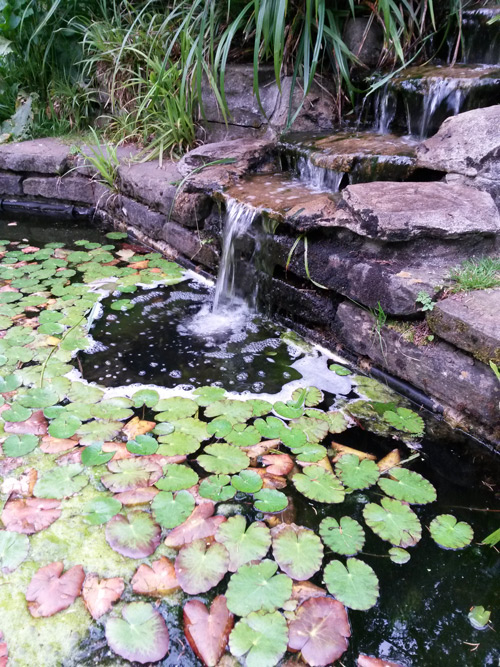The Paradox of Mindfulness
by Christopher Joseph
 With the beginning of a New Year comes the traditional tendency to reflect on the past year and make resolutions or set goals for the coming year. But what place, if any, does mindfulness have in this?
With the beginning of a New Year comes the traditional tendency to reflect on the past year and make resolutions or set goals for the coming year. But what place, if any, does mindfulness have in this?
Mindfulness is almost always portrayed as being synonymous with present moment awareness – of being ‘in the moment’. Being aware of our present moment experience such as bodily sensations, thoughts and feelings is a large part of mindfulness but it’s not the full story.
If we follow the origins of mindfulness to its Buddhist roots then we find two dimensions of awareness that are referred to: ‘Sati’ which is the Pali word for ‘bare awareness’, and; ‘Sampajanna’ which is often translated as ‘continuity of purpose’.
This ‘continuity of purpose’ is like the thread that runs through our lives. Whilst a stream may be ‘captured’ in a moment by a photograph it is far more than the photograph – it has a source, a present moment flow and a direction. As do our lives. Unlike a stream, however, whose direction of flow is largely governed by gravity, the lie of the land and water that has gone before it, we have far more choice over the direction of our lives, even if at times we can’t ‘see’ this choice. (For further exploration of choice in the context of mindfulness see my article “5 Steps to Mindfulness”).
Sometimes, people who meditate are viewed as ‘lofty’ people who don’t have a thought for the past nor a care for the future – they just go with the flow! In my experience this is generally not the case! This view does however begin to illustrate the paradox of mindfulness. In the conventional sense, success is based on the achievement of goals i.e. getting from ‘A’ to ‘B’ in a particular endeavour – be that education, sport, music, weight loss or even mindfulness itself. By definition ‘A’ is portrayed as some inferior state to the desirable state which is ‘B’. Since ‘B’ has not yet been achieved this sets up a tension which can be motivating, but it can also be destructive and stressful if we, in our striving, are constantly rejecting ‘A’ – because ‘A’ is our present moment experience – it’s who we currently are!
This is the paradox of mindfulness, which lies at the heart of mindfulness practice: if you want to get from A to B, you have to really be at A!
If for example you’re overweight and become short of breath when climbing the stairs and you wish to lose weight and gain fitness. Rather than making effort to stop and block-out the associated unpleasant and anxious feelings (which tends to make us feel more anxious), we can ‘turn towards’ the anxiety and explore it with a kind curiosity. Where do you feel it in your body? How does it actually feel? In doing so we can stay in tune with our body, which is essential if we are going to be able to pick up on the important feedback from our body in relation to the effect of the food and movement we give it. More importantly we can’t enjoy the process of losing weight and becoming healthier and fitter if we are numb to our bodies!
Be careful though – ‘A’ in this case is not the secondary experience of all the thoughts, additional feelings, judgements, analyzing and problem-solving that usually accompany our feelings of anxiety about being overweight and unfit for example. ‘A’ is the primary experience – our direct, felt, moment by moment bodily sensory experience of the anxiety we’re currently feeling in relation to our health.
Mindfulness is, therefore, about being fully at ‘A’, about accepting and being with our present moment experience, warts and all. But for mindfulness practitioners this doesn’t mean that there isn’t a ‘B’, or, if not a ‘B’, then at least a direction that we wish to go in – a ‘continuity of purpose’.
This continuity of purpose or direction might be different for different people. For me personally, there is a more mindful me that I wish to step into, a more compassionate me, a wiser me, a calmer, stiller, more centred me. Whilst I don’t set New Year’s resolutions myself in the conventional sense I do hold aspirations. My practice is therefore a balance which is centred around recognizing the value and importance of these aspirations, which give me a direction of where I’d like to go to and a continuity of purpose, but also at the same time fully acknowledging my present moment experience of where I’m currently at.
When Ellen MacArthur broke the world record for the fastest solo circumnavigation of the globe on the 7th February 2005 she’d had to evaluate and reevaluate her position, the environmental conditions and her own physical and mental condition countless times to make the necessary adjustments to stay on course. In the same way we also have to honestly evaluate our own environmental and personal conditions if we are to maintain our own course, our own continuity of purpose. The real beauty of a sustained mindfulness practice in its wider context is that rather than the once yearly New Year’s evaluations and resolutions we are able to maintain a far more regular, detailed and objective view of our ourselves so that we can maintain course and follow our own path.